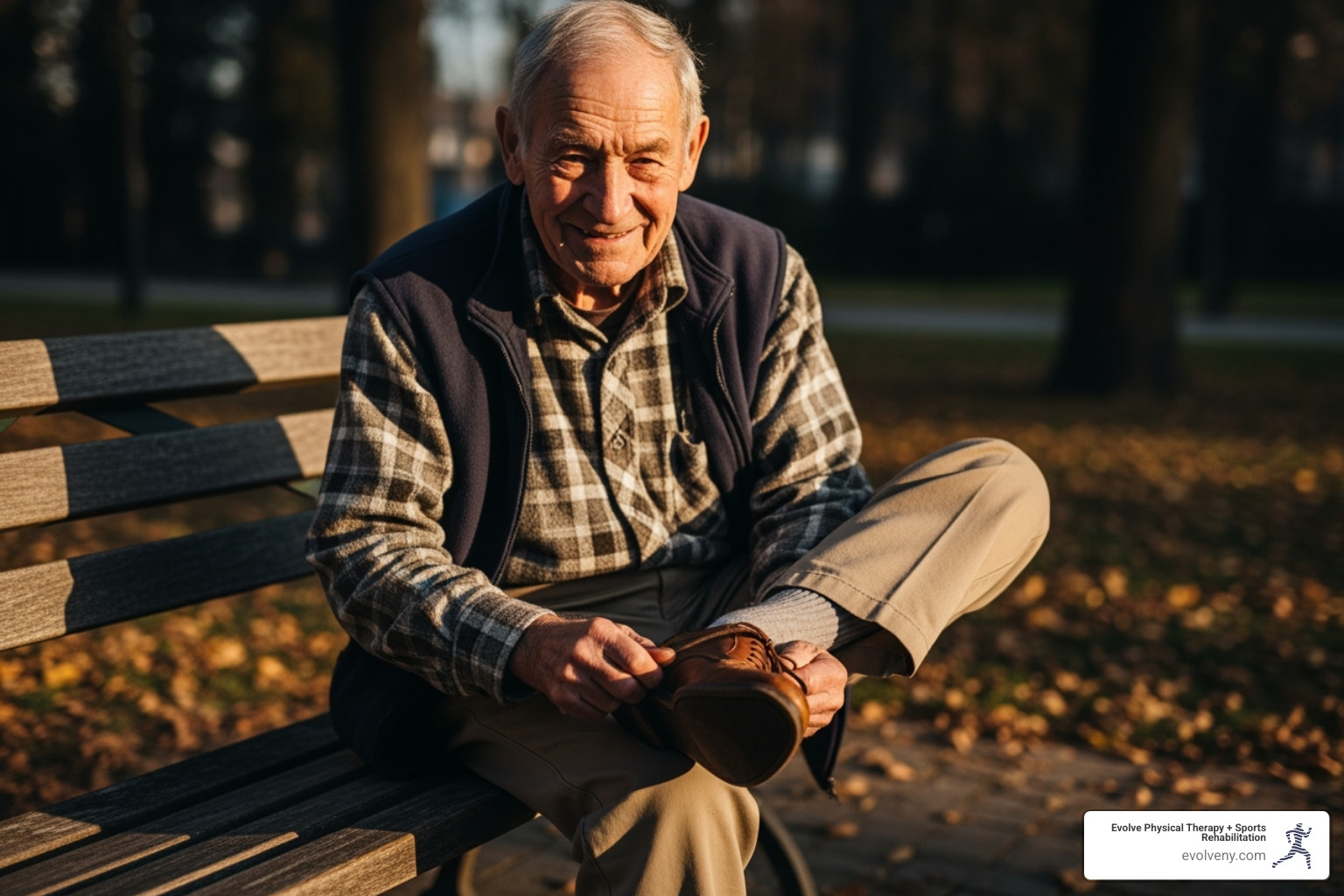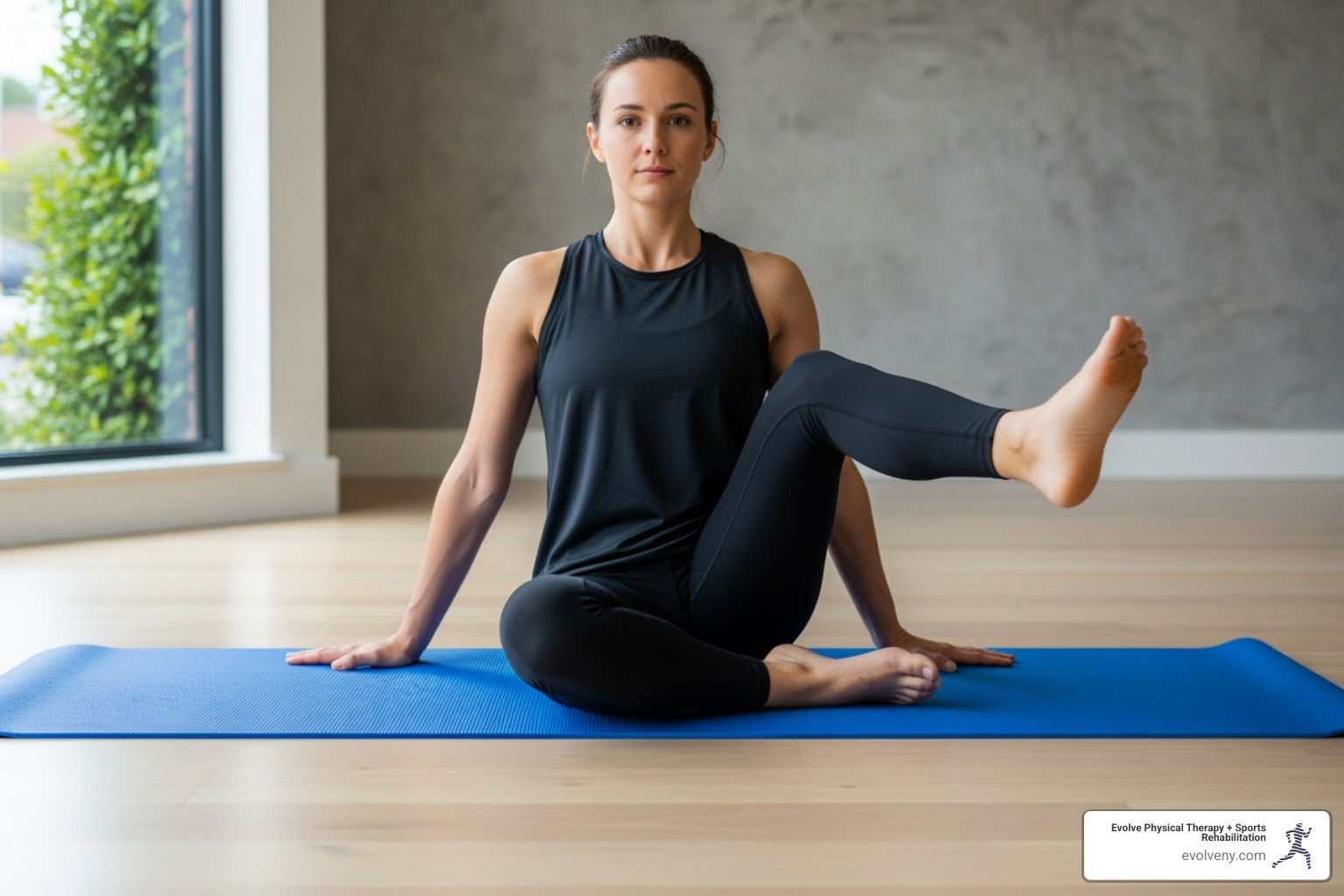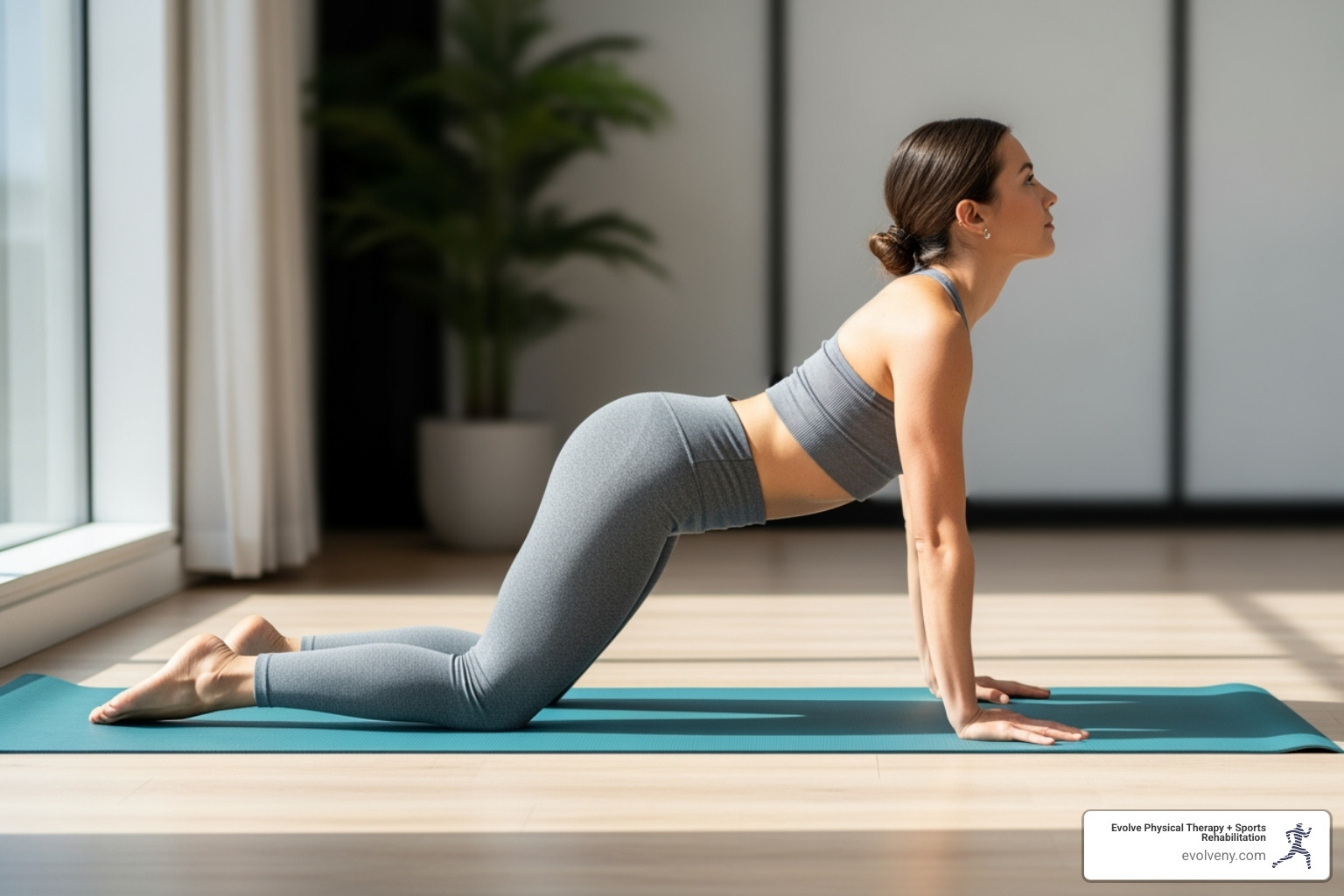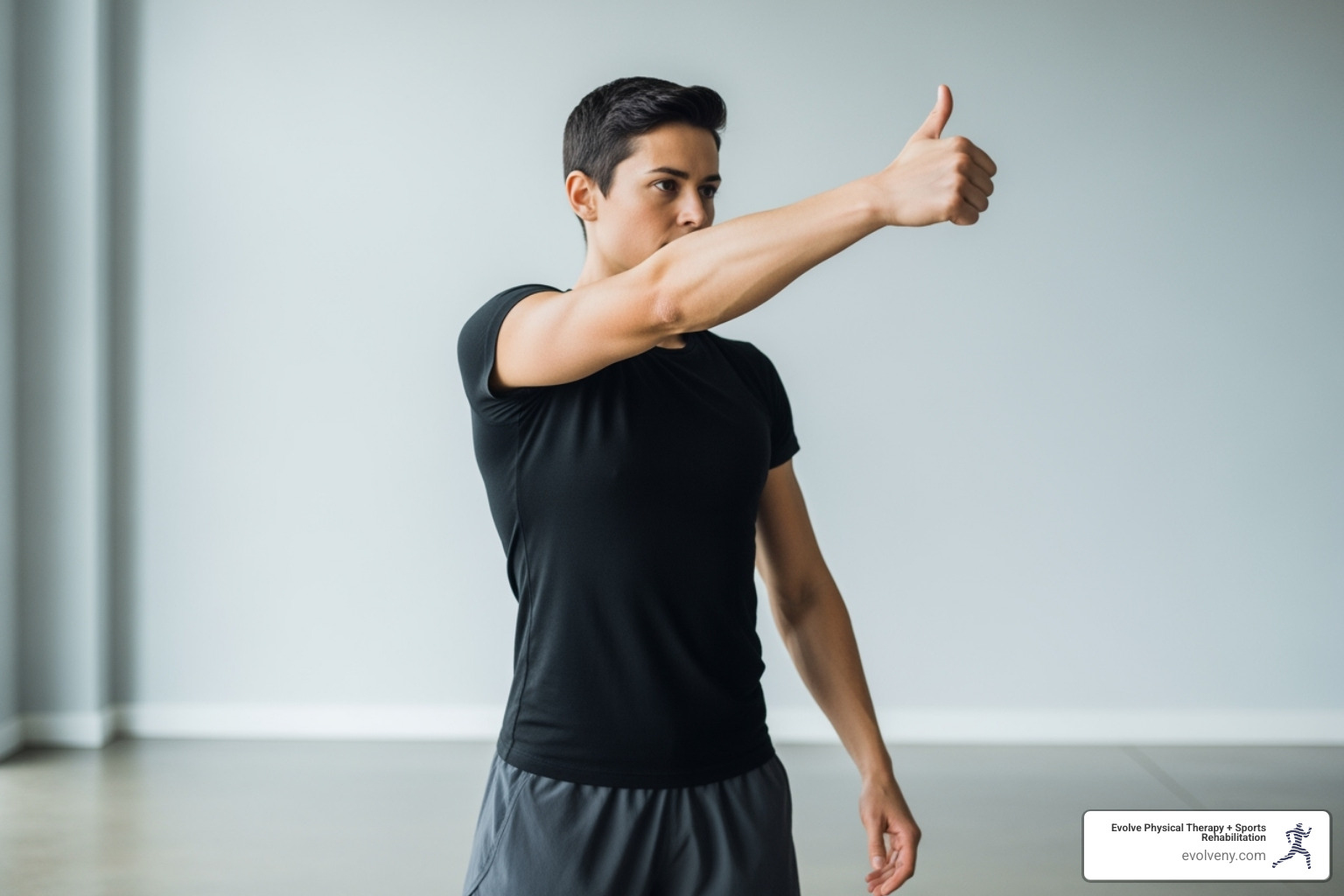Mobility Movement Training: Unlock Your Body's Potential
Why Your Body Needs More Than Just Flexibility
Mobility movement training is actively moving your joints through their full range of motion with strength and control. It combines flexibility, stability, and coordination to improve how your body functions daily.
What Mobility Movement Training Includes:
- Active range of motion - moving joints under your own muscle power
- Dynamic stretching - controlled movements that prepare muscles for activity
- Strength through range - building stability at different joint positions
- Functional patterns - movements that translate to real-world activities
- Joint health focus - keeping joints lubricated and properly aligned
Waking up stiff and tight is a sign your body needs more than occasional stretching—it needs mobility movement training.
Unlike passive stretching, mobility training challenges you to control your body through movement. Research shows that better mobility scores correlate with a six times lower injury risk. It's not just about touching your toes; it's about moving well in all directions.
As we age, joints can become stiff and our range of motion can decrease. The good news is that mobility movement training can combat these effects, helping you move with confidence.
I'm Lou Ezrick, a physical therapist with nearly two decades of experience. I've seen how mobility movement training is the foundation for pain-free movement and long-term joint health for everyone from trauma victims to active professionals.
Mobility vs. Flexibility: Understanding the Key Difference
Imagine someone who can easily pull their leg to their ear but stumbles when trying to kick a ball. That's the difference between flexibility and mobility movement training in action.
Most people confuse the two, but they are quite different. Flexibility is passive—it's how far your muscles can stretch with assistance, like holding a toe touch. Mobility movement training, on the other hand, is active—it's the ability to move through that range of motion with your own strength and control.
Here's how they stack up against each other:
| Feature | Mobility | Flexibility |
|---|---|---|
| Movement Type | Active (requires muscle engagement) | Passive (often assisted or static) |
| Focus | Joint health, control, stability, strength | Muscle lengthening, tissue extensibility |
| Primary Goal | How well you can move through a full range | How far you can stretch or be stretched |
| Application | Functional movements, athletic performance | Reaching passive end ranges, relaxation |
The key difference is that mobility is active, while flexibility is passive. Mobility requires your muscles, joints, and nervous system to work together in a coordinated effort.
What is Mobility Movement Training?
Mobility movement training takes a whole-body approach, teaching your muscles, joints, and nervous system to work together smoothly. It improves coordination and your body's awareness of its position in space.
This training focuses on real-life movement patterns like squatting, reaching, and twisting. These are life skills, not just gym exercises. At Evolve Physical Therapy, we see how this integrated approach helps people move more efficiently. For more insight, check out our article on the Difference Between Mobility and Movement.
Why Flexibility Isn't Enough
Ever wonder why you can touch your toes but still feel stiff or get injured? The problem is that passive flexibility alone doesn't prepare your body for active movement.
If your muscles aren't strong through their full range, your body compensates. For example, a lack of hamstring control can lead to an overworked lower back or tight hips, causing nagging pain.
Mobility movement training builds strength and control within your available range. It's the difference between passively doing the splits and actively kicking a soccer ball—one requires control, the other doesn't. Dancers and gymnasts don't just stretch; they practice controlled movements. They need both strength and control, which is what mobility movement training brings to everyday life.
The Core Benefits of Mobility Movement Training
Imagine waking up without stiffness, reaching for a high shelf without wincing, or tying your shoes with ease. These are the real-world benefits that mobility movement training delivers.

You'll quickly notice reduced pain and stiffness and improved posture. Mobility work addresses daily discomforts by teaching your joints to move freely with proper muscle support.
For regular exercisers, mobility training transforms workouts by improving efficiency, balance, and agility. Crucially, it reduces injury risk. Research shows that better mobility scores correlate with a six times lower likelihood of injury. The long-term benefits are an investment in longevity and quality of life, paving the way for decades of pain-free activity.
Injury Prevention and Improved Performance
Most injuries occur not where you feel tight, but where your body compensates. A stiff mid-back can lead to an overworked lower back; restricted hips can strain your knees.
Mobility movement training breaks this compensation cycle by ensuring each joint does its part, leading to improved movement efficiency. It's the ultimate warm-up, preparing your body for workouts by increasing blood flow, activating the nervous system, and lubricating joints.
This preparation significantly decreases overuse injuries because no single area is overwhelmed. Paired with practices like Dynamic Balance Training, it's your best defense against common injuries. Better mobility also means deeper squats and effortless overhead movements, making your workouts more effective.
Better Daily Life and Healthy Aging
Aging and modern lifestyles—like hours of sitting—naturally lead to stiffer, achier bodies. The empowering truth is that mobility movement training can slow or even reverse many of these changes.
It combats the effects of sitting by restoring hip flexibility and postural strength, and it eases everyday tasks like reaching or dressing, ensuring these activities remain natural and joyful.
The National Institute on Aging confirms that maintaining mobility is key to living independently as we age. Mobility training directly supports this by keeping you capable and confident. It's never too late to start. By mitigating age-related stiffness, you invest in an active future and the independence to live life on your terms.
Essential Mobility Exercises for the Whole Body
Ready to move better? The beauty of mobility movement training is its simplicity. These exercises target common problem areas to build a foundation for fluid, pain-free movement. Think of them as daily maintenance for your joints. For more ideas, see our guide to the Best Mobility Movements.
Hip Mobility Exercises
Tight hips can cause lower back and knee pain. These exercises help restore mobility.

- 90/90 Hip Switch: Seated with knees bent at 90 degrees (one forward, one to the side), keep your back straight and smoothly switch your legs to the opposite side. This improves internal and external hip rotation.
- Spider Lunge: From a plank, step one foot outside your hand. Keep the back leg straight or drop the knee to the ground. This opens tight hip flexors.
- Cossack Squats: Stand with feet wide apart. Shift your weight to one side, bending that knee into a squat while keeping the other leg straight.
- Seated Figure-4 Stretch: Sit with knees bent, cross one ankle over the opposite knee, and gently pull the bottom knee toward your chest to target deep hip rotators.
For a deeper dive, check out our guide on Hip Mobility Movements.
Spine and Back Mobility Exercises
Our spines are meant to move in all directions, but modern life makes them stiff. These exercises help restore that motion.

- Cat-Cow: On your hands and knees, alternate between arching your back (cow) and rounding it (cat) to warm up the spine and counteract sitting.
- Thoracic Rotations (Open Books): Lie on your side with knees bent. Slowly open your top arm like a book, allowing your upper back to rotate. This targets mid-back stiffness.
- World's Greatest Stretch: From a lunge, this stretch combines hip mobility, thoracic rotation, and a hamstring stretch, making it a highly efficient movement.
- Lumbar Windshield Wipers: Lie on your back with knees bent and gently drop them from side to side. This soothes the lower back and maintains rotational mobility.
These movements complement the approach we use in Therapeutic Exercise Brooklyn to restore healthy spinal function.
Shoulder and Ankle Mobility
Shoulder and ankle mobility are crucial. Stiff shoulders can cause neck pain, while tight ankles affect your entire movement chain.

- Shoulder CARs (Controlled Articular Rotations): Stand tall and slowly make the largest possible circle with one arm, keeping your body still. This teaches controlled shoulder movement.
- Dead Hangs: Hang from a pull-up bar for 10-15 seconds, letting gravity stretch your shoulders and decompress your spine. Build up time gradually.
- Wall Ankle Mobilization: Face a wall, place one foot a few inches away, and drive your knee toward it while keeping your heel down. This mobilizes the ankle.
- Downward-Facing Dog: This classic yoga pose stretches the calves, hamstrings, spine, and shoulders simultaneously, making it great for counteracting 'tech neck'.
For more targeted ankle work, explore our article on Ankle Mobility Movements.
How to Create Your Mobility Routine
Creating a mobility routine is about consistency over intensity. Like brushing your teeth, it's the daily habit that counts. Listen to your body, start slow, and progress gradually to build sustainable habits and avoid injury. Always prioritize proper form over range of motion; forcing movements leads to setbacks. For personalized guidance, explore our Therapeutic Exercise Programs.
Getting Started with Mobility Movement Training
- Frequency and Duration: Start with two to four sessions per week for 10 to 20 minutes. Consistency is more important than duration; even five-minute "movement snacks" throughout the day are effective.
- Timing: Use dynamic mobility as a warm-up to prepare for workouts. Use deeper stretches for cool-downs or on rest days for active recovery.
- Tracking Progress: Keep a journal or film yourself monthly to stay motivated and see how far you've come. For more ideas, see our tips for Balance Exercises at Home.
Safety and When to See a Professional
Always prioritize proper form over range of motion. A gentle stretch is good; sharp pain is not. If it hurts, stop.
Use caution with acute injuries, post-surgery recovery, or hypermobility. In these cases, professional guidance is key.
If you have chronic pain or specific concerns, consult a physical therapist. At Evolve Physical Therapy, we can design a personalized program to help you regain pain-free movement. This is crucial for complex issues like balance problems. Learn more about our Physical Therapy for Balance Disorders and how we can help.
Frequently Asked Questions about Mobility Training
As a physical therapist, I get these questions about mobility movement training almost daily. Here are the most common answers.
How long does it take to see results from mobility training?
You may feel some immediate relief after your first few sessions. With consistent practice (2-4 times per week), you can expect noticeable improvements in range of motion and daily comfort within 3-6 weeks. Lasting changes, like sustained joint health and reduced injury risk, build over several months. Consistency is the key to long-term benefits.
Can mobility training replace stretching?
Think of them as complementary. Traditional stretching is typically passive (holding a stretch), which is great for cooling down. Mobility movement training is active (controlling your body through a range of motion), making it ideal for warm-ups. Dynamic stretching is a form of mobility. A balanced routine includes both.
Is mobility training suitable for all ages and fitness levels?
Absolutely. Mobility movement training is adaptable for everyone, from beginners and athletes to seniors. For beginners, it builds a solid movement foundation. For athletes, it improves performance and prevents injury. For older adults, it combats stiffness and improves balance, which is why we offer programs like Balance Training for Seniors. Exercises can be modified for any fitness level or physical limitation, making it a truly universal practice.
Open up Your Potential with a Hands-On Approach
Movement should feel effortless. As we've covered, mobility movement training delivers powerful benefits: injury prevention, improved daily function, and long-term joint health. But knowing what to do isn't the same as doing it effectively. The right guidance is key.
At Evolve Physical Therapy + Sports Rehabilitation, our hands-on approach gets results. We don't just give you an exercise list; we evaluate your unique movement patterns to find the root cause of your limitations. Then, we guide you through a personalized mobility movement training program.
Whether you're dealing with nagging pain or want to improve athletic performance, we meet you where you are. Our convenient Brooklyn locations in Marine Park, Gravesend, Midwood, Park Slope, and Mill Basin are ready to help you start.
We focus on both healing current problems and strengthening your body to prevent future ones. Our goal is to empower you with the tools for long-term independence.
Taking the first step is simple. Schedule an evaluation to assess your movement and create a roadmap to your goals. Don't let stiffness or discomfort limit you another day. Ready to open up your body's potential? Learn more about our physical therapy services and find the freedom of moving well.


